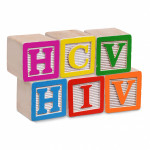People coinfected with HIV and hepatitis C virus (HCV) are experiencing rising rates of liver cancer, although their rates of other liver health events are dropping, aidsmap reports. Publishing their findings in Clinical Infectious Diseases, researchers from the EuroSIDA cohort, the South Alberta Clinic Cohort, the Canadian Co-infection Cohort and the Swiss HIV Cohort studied data on 7,229 coinfected individuals from 2001 to 2014.
Among the cohort studied, 72 people developed hepatocellular carcinoma (HCC, the most common form of liver cancer) and 375 experienced other liver events. Overall, the liver cancer diagnosis rate was 1.6 per 1,000 person-years (person-years are the cumulative years individuals spend in a study’s follow-up period) and the rate of other liver events was 8.6 per 1,000 person-years.
The annual rate of liver cancer diagnosis increased by 11 percent per year, from 0.4 percent per 1,000 person-years in 2001 to 2002 to 2.3 per 1,000 person-years in 2013 to 2014. Meanwhile, the incidence of other liver events fell by 4 percent per year, from 9.9 cases per 1,000 person-years in 2003 to 2004 to 6.2 cases per 1,000 person-years in 2013 to 2014.
The researchers theorized that the rise in the rate of cirrhosis explained the upswing in liver cancer rates. Among those with cirrhosis, the liver cancer rate was 7.9 per 1,000 person-years, compared with 0.5 per 1,000 person-years in those who did not have cirrhosis. The respective rates of other liver events were 35.6 and 2.4 per 1,000 person-years.
The rate of liver cancer and other liver events was lower in those with more than 350 CD4 cells compared with those with fewer, regardless of whether they had cirrhosis.
To read the aidsmap article, click here.
To read the study abstract, click here.







Comments
Comments